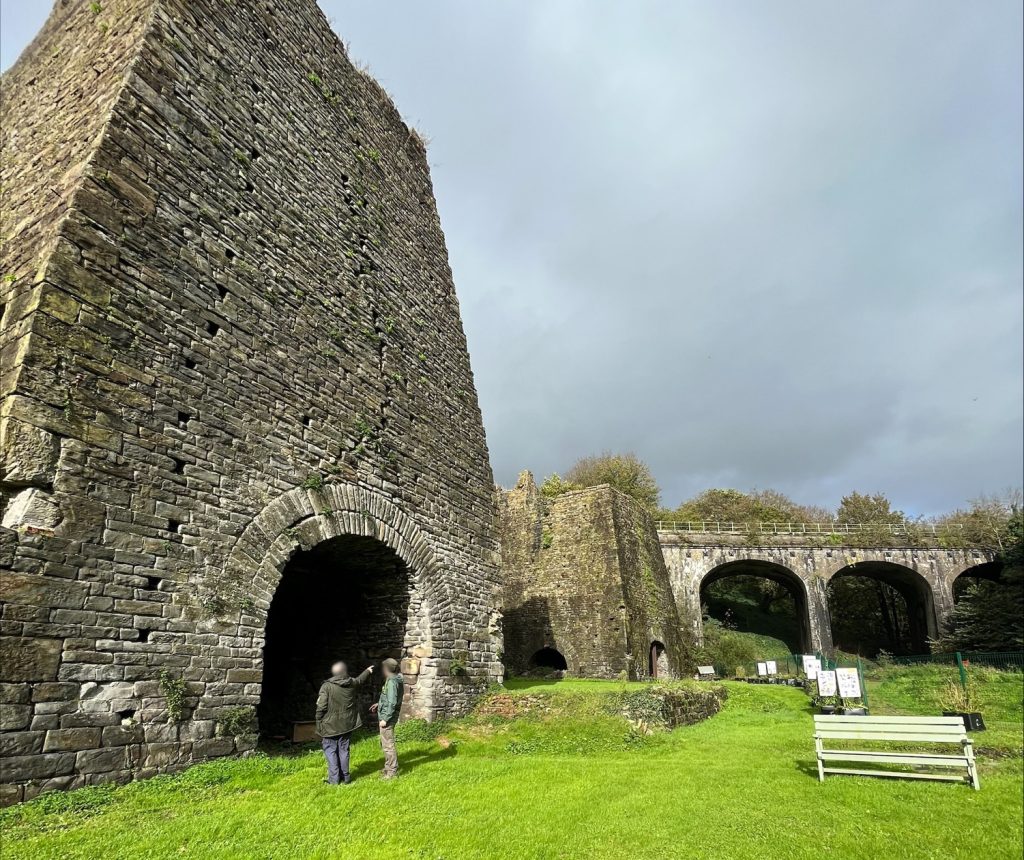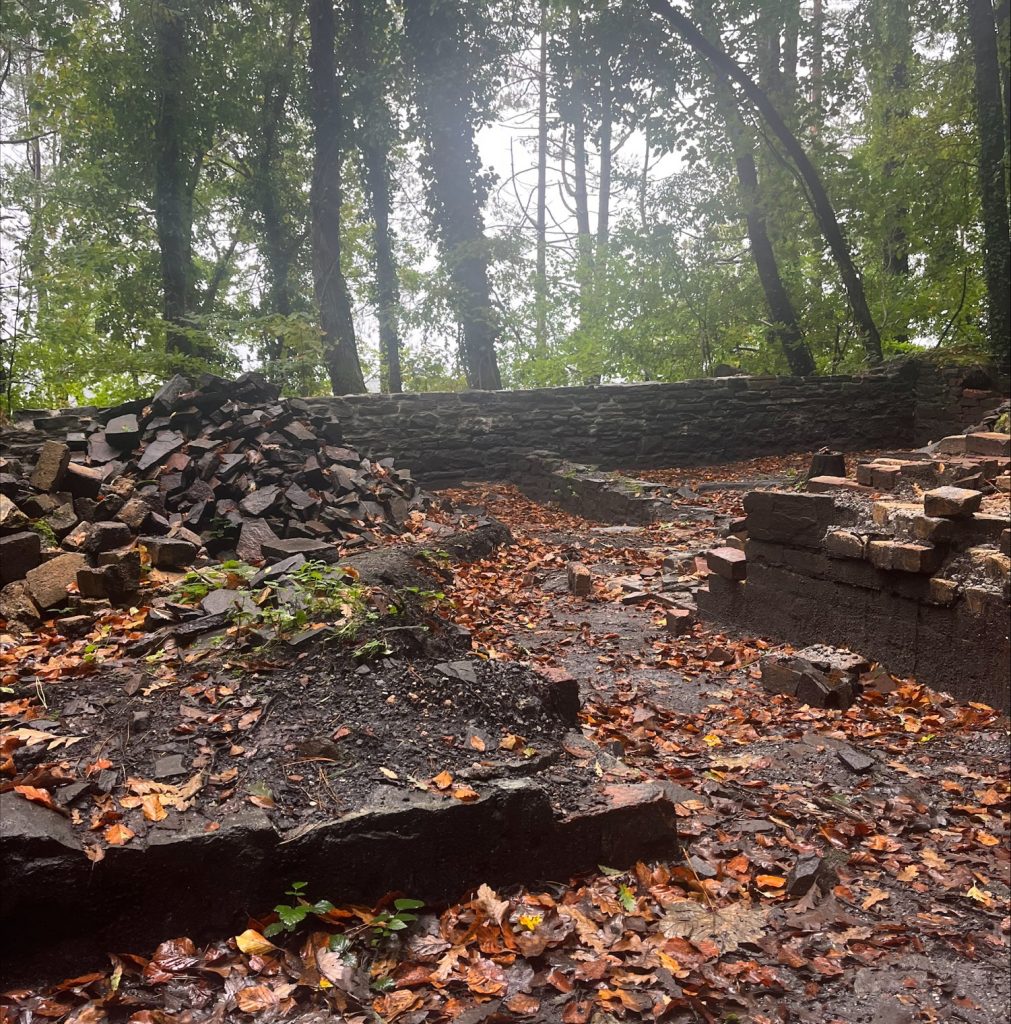
Alexander Langlands, our Community Innovation Practitioner based at Swansea University, discusses the potential of collaborative community making and skills development when it comes to building community ownership, placemaking and addressing the skills gap in heritage and conservation.
The British sculptor and environmentalist Andy Goldsworthy once said that he only feels like he really knows a place when he had worked in it. As an archaeologist, I concur. Tools in hands, digging, cutting, shovelling, scraping, sampling: it’s not just the nature of the earth, the shape of the stones and the colour of the dust, but the artifacts, the structures, and the evidence of the people that lived in these landscapes over time that gives the deep connection that makes me feel like I know a place. What matters here is that we can understand our world in non-textual and nonverbal ways. We can make sense of it by immersing ourselves through various forms of bodily engagement. It’s great that the UK government intends to finally ratify UNESCO’s Convention for Intangible Cultural Heritage, but our past also remains something that is still essentially tangible. It is the physical materiality of our world through which narratives of identity and belonging are expressed, performed, and reproduced.

Here in South Wales, as in other regions of the United Kingdom, amongst the most potent physical edifices of our heritage are the monuments, buildings, and landscapes that remind us of our industrial past. They have become essential components in the places that some of us call home. Covid19 has played a key role in an enhancing focus on ‘place’ as a theme through which public money is being channelled for the regeneration of communities. An emerging policy concern in these ambitions is the role that heritage ‘assets’ play in regeneration. This focus can be problematic: when the heritage sector makes the case that historic buildings are essential to local character and distinctiveness – and therefore to identity, belonging and the well-being elements that come with place-attachment – it ups-the-stakes for parts of the UK that experience high levels of deprivation. This is the high-cost/low-income ‘double whammy’ of conserving industrial monuments: by their nature they exist in post-industrialized communities which, bereft of industry, have not the affordances to maintain the edifices of a perceived past greatness. Left ruinous, to some members of the community, they can signal decay, decline and dereliction.
Place-making as a concept in Wales is well served by the Place-making Charter for Wales, that has a list of signatories principally drawn from architects, design associates, town planners, and property developers – cultural institutions are conspicuous by their absence. It’s okay though, because the word ‘community’ appears 197 times in the Place-Making guide and a range of stakeholder workshops, surveys, questionnaires, interviews, and newsletters ensures that they are sufficiently involved. But again, we find ourselves coming back to words and text. Heritage discourses at all levels tend toward logocentricity. The academic research community thrives on seminars, lectures, workshops, papers – text – but many in the community prefer to roll up their sleeves and get to grips with the past, to know it through doing. By harnessing those skills, we can build co-creation partnerships that allow for a greater range of participation, especially from those who often become marginalised in the process. For a while we in the Centre for Heritage Research and Training (CHART) have been asking who really makes place, what is a ‘community’, and how can participation in place-making be more equitable.
The ruins of a lost coal mine at Craig Gwladys Country Park with its engine house, its smithy and incline railway, have given CHART a chance to work collaboratively with a wide range of stakeholders, and to build a creative community around the process of managing these assets, vital as they are to the narrative of that part of the valley and the wider place-making ambitions for the region. The problem presented itself in quite simple terms: heritage assets are important to making healthy and meaningful places, but they require ongoing maintenance. There is a skills shortage in the region. There is a lack of funds to secure professional expertise from outside. There is a lack of employment opportunities. We came together as a community to find a creative long-term solution to making these heritage assets sustainable and our short film documents part of this process.
The ruins of an old blacksmith’s workshop have now been stabilized and, in the process, new cross-sector heritage conversations and connections have been made. It’s been a timely reminder that heritage is a process, and not just a product. The transformative power of physically making a place, how a bodily engagement with stones, lime mortar, and tools, unlocked in our participants a meaningful connection, has been key to this. Yes, we’ve made a place in the hills of the Neath Valley but more importantly, we made a place in the minds of our young collaborators, who by physically engaging will forever associate this place with a past industry, with a set of skills, and with a new creative community.
Alexander Langlands is a Community Innovation Practitioner from the 2023 cohort. You can find more of his work on our website or read about the 2023 CIP programme.
Brought to you by


